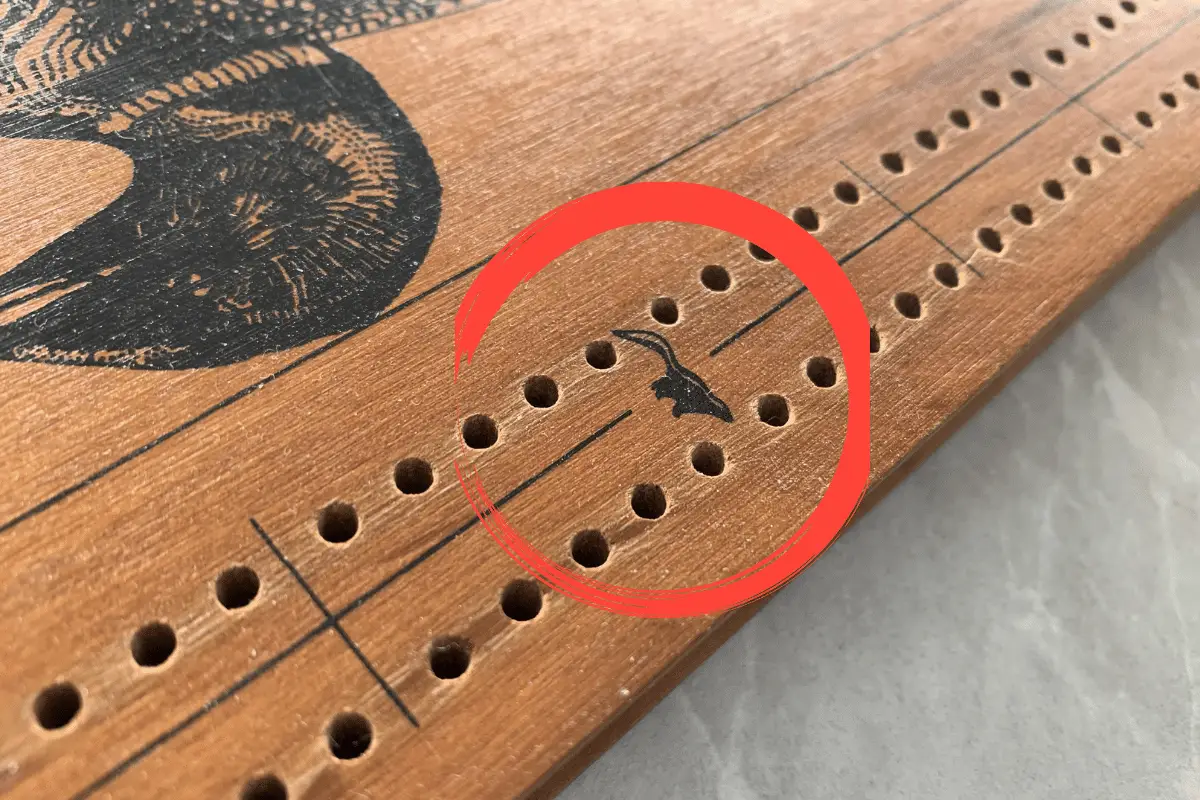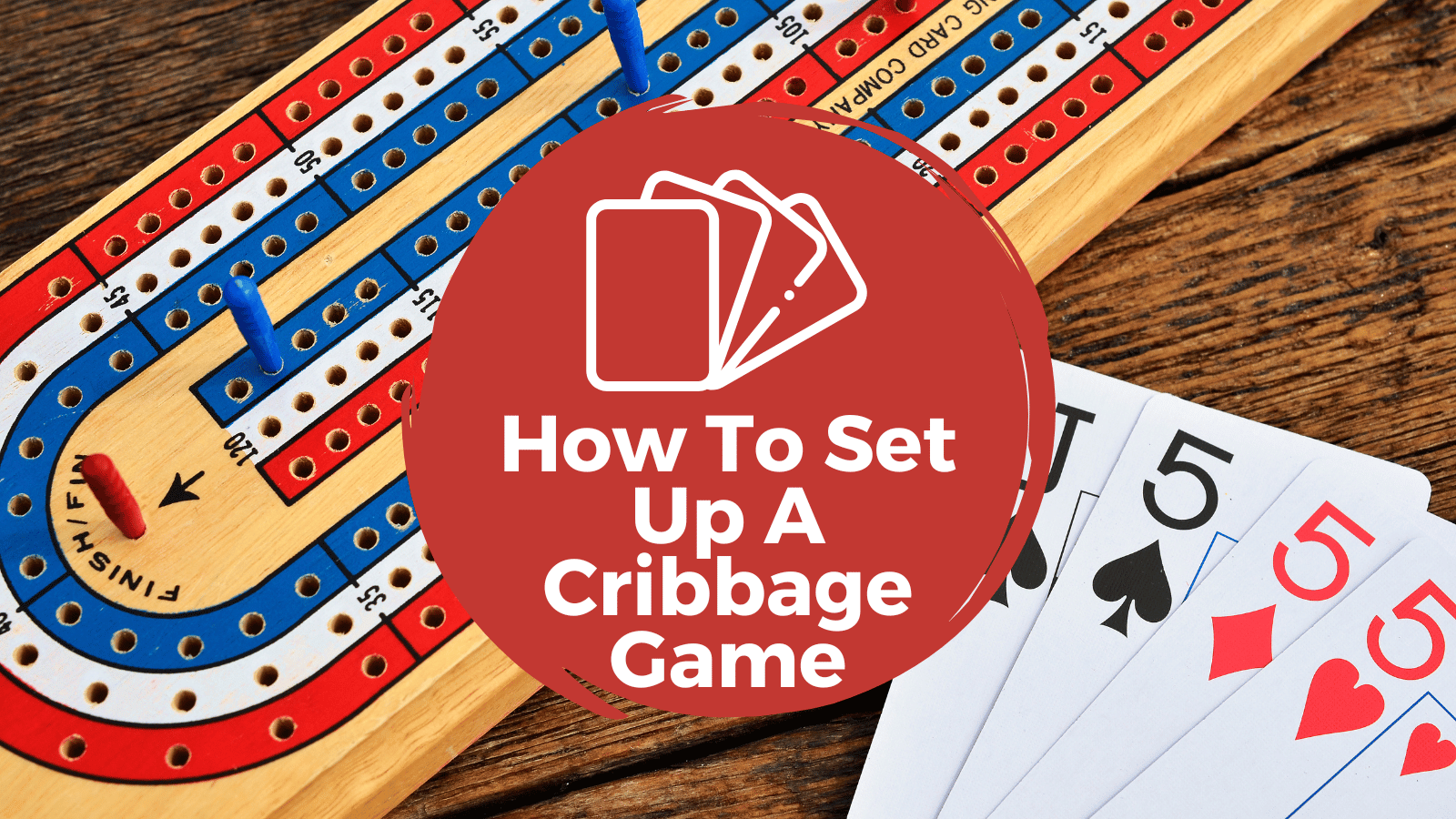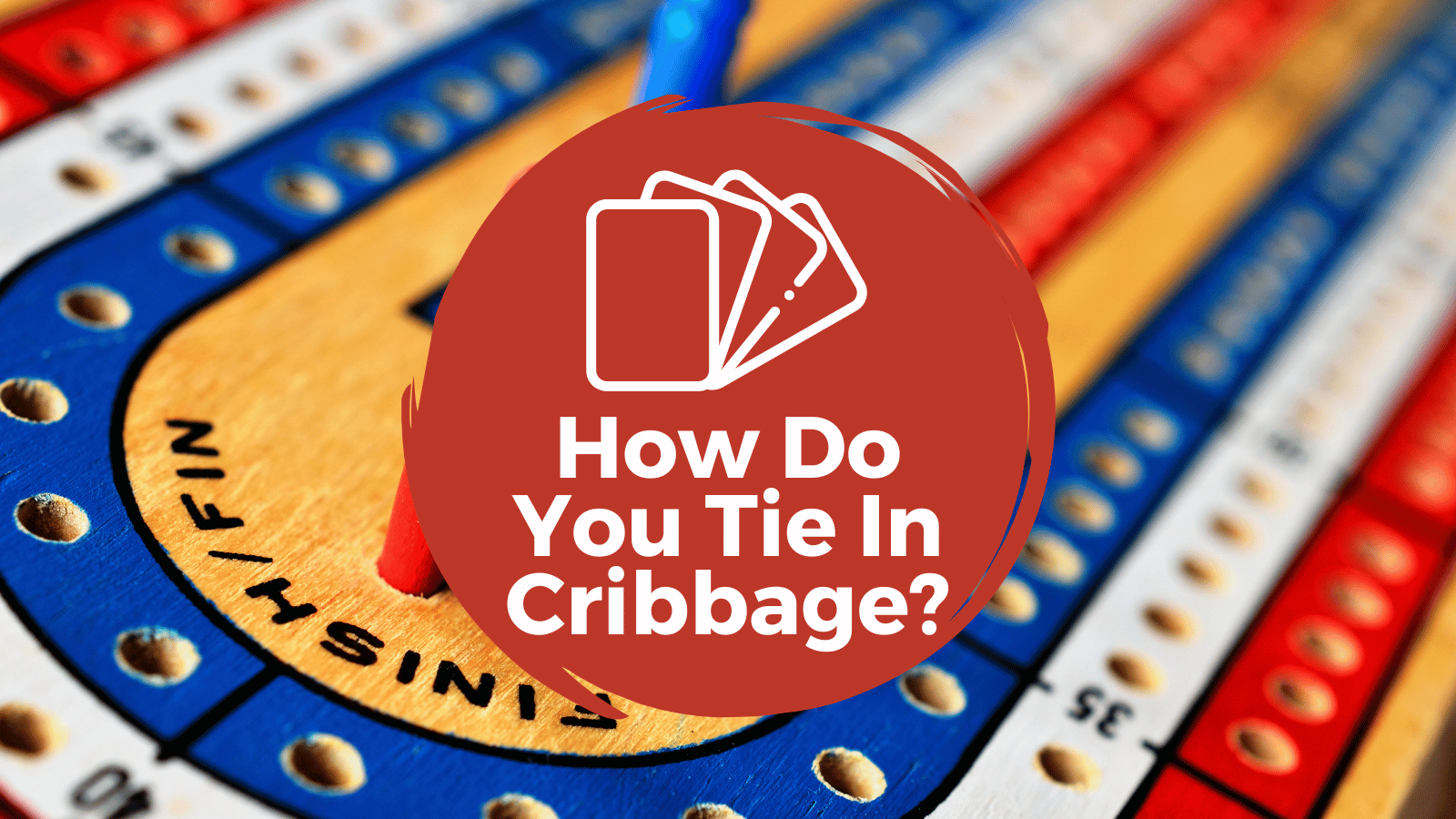If you’ve ever looked at a cribbage board, it’s mostly straightforward.
Each hole is a point, and there are lines marking every 5 points to help you count bigger hands faster.
But if you see an “S” or the picture of a skunk, you’ll probably end up just what the heck that’s for.
While most people don’t have much need for the skunk lines in cribbage, it’s still good to know what they mean and how they work.
This is why I wanted to dive deep into how to skunk in cribbage and answer related questions.
Let’s get to it!

Check out our comprehensive guide on the rules of cribbage and how to play with examples, scoring breakdowns, and vocabulary guide.
Table of Contents
How To Skunk In Cribbage (Quick Reference Table)
To skunk someone in cribbage, you need to get to 121 points before your opponent reaches the 91 point mark for a skunk and the 61 point line for a double skunk. A single skunk means you win the equivalent of two games. A double skunk means you win three games.
Skunking in cribbage is simple in theory but challenging in execution.
The odds of winning by a double skunk is low, but skunks happen often enough it’ll happen to everyone at some point (from both ends!).
Check out this quick reference table for a breakdown of how skunks work. Be sure to read on if you want more details.
| Type Of Skunk | Where Is The Line? | Range For Getting Skunked | How Much Is It Worth? |
|---|---|---|---|
| Skunk | 90 points | 61-90 | One extra game or one extra point |
| Double Skunk | 60 points | 31-60 | Two extra games or two extra points |
| Triple Skunk | 30 points | 0-30 | Wins a match automatically |
Where Are The Skunk Lines?
The skunk lines in cribbage rest at the 30 point marks. The single skunk line is at the 90-point mark, meaning the winner need to catch the opponent between 61-90 for a skunk. Scoring a skunk gets you two points in a match or the equivalent of two games.
If there are 121 points in a cribbage game, the skunk line rests at 75% of the points.
To win by skunking the opponent means you beat their score by 25%.
Knowing where the lines are is important if you’re stuck playing cribbage without a board.
Learn how this is possible at the link to our guide.
What Is A Double Skunk?
A double skunk rests at the 60-point line in cribbage. If someone is caught behind this line (<60 points) when the other player scores their 121st point, they are “double skunked.” This means the player who went out wins 3 points to the match or the equivalent of three games.
The chances of catching an opponent or getting caught behind the double skunk line are rare.
This means the opponent outscored you 2-1 consistently.
Well-played cribbage makes this statistically unlikely, but not impossible.
Cribbage is as much luck as skill, so don’t count it out.
I’ve been in a double skunk situation less than 10 times in my 25 years of regular cribbage playing, compared to getting regular skunked, which happens a few times per year.
Double skunks are rare enough not every cribbage board will show the symbol for it.
If it does, it’s often shown with two little skunks or two “Ss.”
What Is A Triple Skunk?
A triple skunk is when someone finishes the game while another player is at the 30-point line or lower. Winning a triple skunk gives you the match automatically. It has no specific game value.
Since the triple skunk line is at the 30 point threshold, to win via triple skunk, you’d need to outplay your opponent 3-1 consistently.
While not technically impossible, the odds are so low it’s rarely occurred in actual play.
The most likely place this happens is between a brand new player and an experienced one who doesn’t cut them a break when it comes to counting.
Remember, there’s a rule in cribbage where if you count your cards wrong, the opponent can correct you and take your points.
Most decent people will give a new player a break before enacting this rule, but if you didn’t, I suppose you could win a triple skunk.
But you’d probably lose a friend!
I have never seen a cribbage board in person that marks the triple skunk line, but when it does, it’s usually three little Ss.
Why Is There An S On The Cribbage Board?
The S on a cribbage board is one way of showing the skunk line. One S is a single skunk, and two Ss are the double skunk.
How To Avoid Being Skunked In Cribbage

The best way to avoid being skunked in cribbage is simply to play your best game. Make good discarding decisions by keeping the most points in your hand and crib (and not giving them to the other player). Peg actively by setting traps and handing away 15s, runs, and pairs.
Outside of playing better cribbage strategies, there’s no perfect way to avoid being skunked.
Sometimes the cards just aren’t in your favor.
When you’re behind in points, it’s not like there is anything to do to catch up other than playing your best hand.
For more details on this, you’ll need to check out some serious cribbage strategies for better play ideas.
For some quick tips, check out these lists:
Discard:
- Keep the most points.
- Avoid giving points to your opponent’s crib unless you keep a much larger amount of points.
- All else being equal, runs have more potential than 15s.
- If you need to decide between 10s and face cards, keep the Jack.
- Lower cards are better for pegging; keep those if you have the chance without affecting the total number of points.
- Don’t keep cards based on the hand you’d get if that one card was cut.
- Don’t forget: you can add multiple cards up to get those points for making 15s.
The Play/Pegging:
- Lead with a card you have the pair of. Then you can come back with the other card if the opponent pairs it.
- Avoid leading 5s at all costs.
- Be careful you never add up to 21. Most people have a ten in hand to make 31 for two.
- Watch out for runs; they don’t have to be in order.
- Pay attention to what the opponent throws out. Think about what they may have in their hand (i.e., if they throw a 7, they probably have an 8).
- 4-5-6 or some combination is a deadly combo at the start, so look out if you play second! (It’s a run for 3 and a 15 for another 2 points.)
Counting:
Counting is tough in cribbage; it’s probably the hardest part.
Have a method for going through the counting process to make sure you don’t miss anything.
With practice, you’ll get faster and more accurate.
Here’s the order most people count in:
- 15s
- Pairs
- Runs
- Flush
- Nobs
Don’t feel bad if you need a printable cribbage scoring cheat sheet to help you out.
(By the way, we have one at the link if you want it, along with a quick scoring article.)
Position Opportunity
One final way to avoid getting skunked only comes into play if you’re close to the skunk line and your opponent is almost out.
If you’re sure they’re going to go out soon, you have two tactics left, and the one you use depends on which player you are.
As the pone or non-dealer, you get to count first.
In this case, go for the highest hand possible.
If you can’t make the line with your hand, focus on pegging to help you over the line and pray for a good cut on the starter card.
As the dealer, you’re in a tough spot. You have to count your hand second, and in cribbage, whoever gets out, wins. It doesn’t matter if your opponent hasn’t had a chance to respond.
In this situation, strike a balance between a good hand and pegging.
But if the opponent is within 6 points, go all out for good pegging cards (pairs, low cards, etc.).
Why Is It Called Skunk In Cribbage?

While the origin of “Skunk” in cribbage is unclear due to its 300-year history, there are many who believe the term came from a bet between players in Montana. The story goes, someone bet another player if they lost the game, they’d eat a skunk. Well, the person lost below the 90 line, and the rest is history.
When Is Skunking In Cribbage Important?
For the average player, skunking is only important in terms of bragging rights and showing how badly you beat your opponent. In official play and matches, skunks award multiple points toward the match and help you win.
Check out the table toward the top for a breakdown of the information we’ve already covered in this article.






